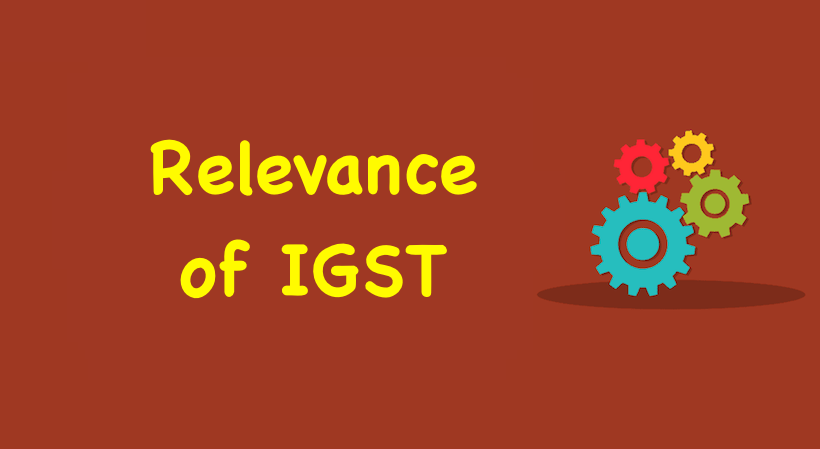Relevance of IGST: IGST is a mechanism to monitor the inter-state trade of goods and services and ensure that the SGST component accrues to the Consumer State. It would maintain the integrity of ITC chain in inter-state supplies. The IGST rate would broadly be equal to CGST rate plus SGST rate. IGST would be levied and collected by the Central Government on all inter-State transactions of taxable goods or services.
The revenue of inter-state sales will not accrue to the exporting state and the exporting state will be required to transfer to the Centre the credit of SGST/UTGST used in payment of IGST.
Relevance of IGST:
Before discussing the IGST Model and its features, it is important to understand how inter state trade or commerce is being regulated in the present indirect tax system. It is significant to note that earlier the Central Sales Tax Act, 1956 regulated the inter-state trade or commerce (hereinafter referred to as “CST”), the authority for which was constitutionally derived from Article 269 of the Constitution. Further, as per Article 286 of the Constitution of India, no State could levy sales tax on any sales or purchase of goods that took place outside the State or in the course of the import of the goods into, or export of the goods out of the territory of India. Only the Parliament could levy tax on such a transaction.
The Central Sales Tax Act was enacted in 1956 to formulate principles for determining when a sale or purchase of goods takes place in the course of inter-state trade or commerce. The Act also provided for the levy and collection of taxes on sales of goods in the course of inter-State trade. However, CST was collected and retained by the origin State, which was an aberration. Any indirect tax, by definition, is a consumption tax, the incidence of which, is borne by the consumer. Logically, the tax must accrue to the destination State having jurisdiction over the consumer.
Advertisement
Input Tax Credit (hereinafter referred to as ITC) of CST was not allowed to the buyer which, resulted in cascading of tax (tax on tax) in the supply chain.
Moreover, various accounting forms were required to be filed in CST viz., C Form, E1, E2, F, I, J Forms etc. which added to the compliance cost of the business and impeded the free flow of trade.
The IGST model was brought in to remove all such deficiencies. IGST is a mechanism to monitor the inter-State trade of goods and services and ensure that the SGST component accrues to the consumer State. It maintains the integrity of ITC chain in inter-State supplies. The IGST rate is broadly equal to CGST rate plus SGST rate. IGST would be levied by the Central Government on all inter-State transactions of taxable goods or services.
IGST rate= CGST rate + SGST rate
Cross-utilisation of credit requires the transfer of funds between respective accounts. The utilisation of credit of CGST & SGST for payment of IGST would require the transfer of funds to IGST accounts. Similarly, the utilisation of IGST credit for payment of CGST & SGST would necessitate the transfer of funds from IGST account. As a result, CGST account and SGST (of, say, Punjab) would have equal amount, whereas, there will not be any amount left in IGST and SGST (of, say, Maharashtra) after the transfer of ITC, in case of inter-state transaction between Puna & Maharashtra.
The IGST payment can be done by utilising the ITC. The amount of ITC on account of IGST is allowed to be utilised towards the payment of IGST, CGST and SGST, in that order.
It is very important to determine the nature of supply – whether it is inter-State or intrastate, as the kind of tax to be paid (IGST or CGST+SGST) depends on that.
Recommended
